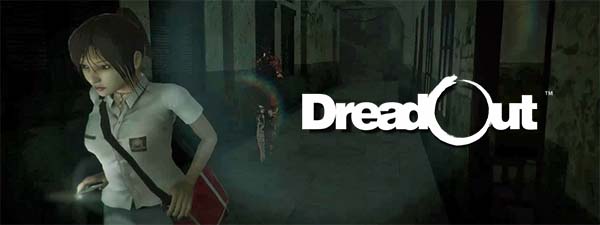
The opening moments of DreadOut set the bar pretty low for what was to come. The visual quality varies wildly. The main character, Linda, looks and animates decent enough, but the other characters all look incredibly stiff and robotic. And they sound almost as stiff and robotic. I'm not sure if it's a matter of poor translation, cultural disconnects, or if it's a deliberate attempt by the developers at camp, but the dialogue and voice acting is cringe-worthy. It wasn't even laughably bad. It was just bad. Don't worry though, you won't have to put up with them for long. They'll disappear for the majority of act 1, rendering the game's futile attempts at early character-building moot, and likely leading to you forgetting that they ever existed until they reappear later. The ghosts and monsters themselves actually get better development and depth, as each one is given a thematic backstory, and its aesthetic design attempts to represent that theme - with varying degrees of success.
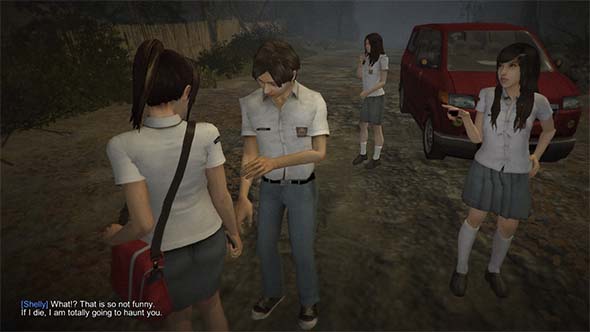
Dialogue and voice-acting might have been going for deliberate camp, but ends up just being bad.
It's an indie game, so I don't expect its graphics to impress on any technical level. But what's presented on screen is often only passable for a PS2-era game, and there's very little artistry or detail in the majority of environments. Some of the environments are decent, and there's the occasional well-placed lighting or particle effect that helps to set a mood. That mood rarely lasts though, because you'll turn a corner and find repetitive environments and flat textures. It is very easy to get lost in a few areas of this game because so much of the environment looks the same. The school building was particularly bad, as all the classrooms had the same desks, chairs, and backpacks sitting around. Only two rooms in the entire building had unique decorations (a teacher's office and what appeared to be a biology lab). The difficult-to-read signposts and lack of any sort of in-game map just exacerbates the sameness of the game's environmental design.
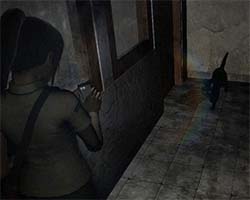
"Aw, hello Mr. Kitty!"
Oh, you're a black cat and are
supposed to be scary. My bad..
Gameplay is less a mixed-bag, and is more universally terrible. Movement is very clunky. The camera loves to pivot around when you go through doors, leading to temporary disorientation as you try to figure out which direction the character is facing. It doesn't help that so much of the game looks the same, so it's easy to get turned around and confused (or outright lost) when the camera wigs out on you.
There's a blue vignette effect that indicates a nearby item that is designed to work as a player aid, but sometimes it can be a hindrance. It works through walls, which I guess is fine since it can let you know that you need to go into a nearby room. What isn't fine is that it also seems to work through floors and ceilings. So the game will nag you that a useful item or clue is nearby, but it might be on a different floor of the building. So you end up wandering back and forth trying to find it - which you never will because it's not there... [More]
175d6d05-3fa8-4f7e-ad1b-458c00a80c3c|4|3.5
Tags:DreadOut, Digital Happiness, horror, indie gaming, Steam, Indonesia, ghost, school girl, camera, cell phone, photograph
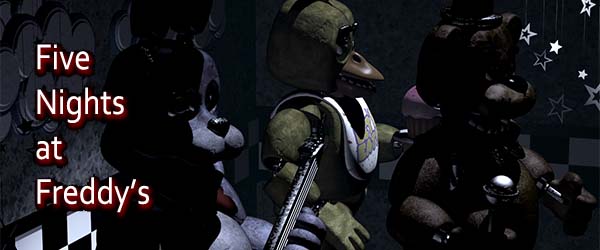
Five Nights at Freddy's was recommended to me by some friends a couple years ago. They knew that I was interested in horror games, and that I was disappointed with the stock of horror games that were available at the time. I bought it at the time, but never got around to playing until recently.
The concept for the game is quite a good one. You work as a night watchman of a Chuck E. Cheese-style children's birthday party center. By day, there's four animatronic animals along the lines of Disney's Country Bear Jamboree that dance and sing songs to entertain children; but by night, these animatronic animals come to life, stalk the halls of the facility, and have been known to attack and kill anybody that they find. This is definitely the stuff of nightmares, and if your young child ever plays the game (or sees you playing it), he or she might never want to go to Chuck E. Cheese or Disneyland ever again. But as an adult, the game just doesn't quite do it for me.
I think the core problem is that the whole experience is built around providing semi-random jump scares. It might cause someone to jump the first one or two times it happens, but after that, you get pretty quickly desensitized to it. And once that happens, the game loses all of its effectiveness, even though it doesn't necessarily lose any of its borderline-unfair challenge.
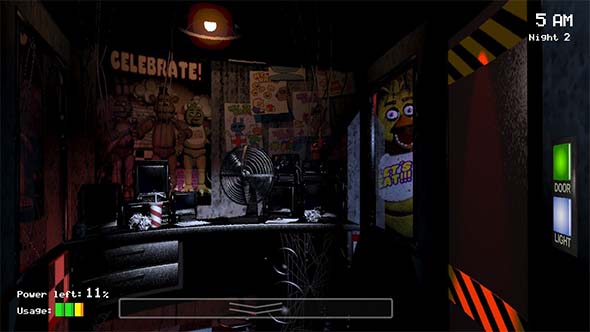
Keeping the security doors closed consumes power, sacrificing your long-term security.
You must spend five nights sitting in a security control room. There's two security doors and a series of camera, but there's also a limited supply of dwindling power. Closing the doors consumes power, looking through the cameras consumes power, turning the lights on consumes power. And if power runs out, you are left sitting in the dark for the rest of the night with no defense against the monstrous mechanical mascots.
The amount of nightmare logic that is required just to establish the setting is actually kind of interesting in its own right. What kind of a place operates with dwindling power? How poorly-maintained is this facility? How does it maintain power during the day? Is it even safe for kids during the day? Why would the doors require power to stay closed? You also get voicemails each night from the former night watchman, who casually talks about the increasingly-complex behaviors of the mascots, new strategies for dealing with them, and so on. These phone messages are very well-acted and well-delivered. All of this contributes to the game's incredible uncanny setting, and everything seems to be in the perfect place to create an incredible horror experience based on powerlessness and creeping tension.
But then the actual gameplay starts, and the excellent atmosphere starts to buckle... [More]
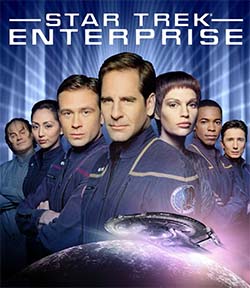
Star Trek: Enterprise is a very divisive topic among Trekkers / Trekkies. Personally, I'm not a big fan. It was a perfectly adequate space adventure TV show, but just never quite worked as hard science fiction for me, let alone as "Star Trek". There were certainly some stand-out good episodes. The haunted space station of "Dead Stop" and the mirror universe antics of "In a Mirror, Darkly" being among my favorites. The annoying thing is that the show made several mistakes at very fundamental levels before it even got off the ground. I could have lived with the show being a prequel, but the efforts to make the show seem both futuristic to the viewing audience, but also less advanced than the (then 40-year-old) original series put the show in an awkward juxtaposition with established series continuity. The hackneyed time travel meta-plot certainly didn't help.
"Juxtaposed" is an excellent way of describing Enterprise as a whole. It's a show that simultaneously seemed ashamed of its "Star Trek" name (remember, it premiered with the title "Enterprise", and "Star Trek" was only stapled back on in later seasons), while also indulging in needless - and sometimes cringe-worthy - fan service (such as the appearance of the Borg, Ferengi, and the entire episode "In A Mirror, Darkly"). It wanted to distance itself from established Trek tropes, but also brought back many of the same technologies, concepts, and character archetypes (simply renaming many of them). It set itself at the cusp of development of advanced science fiction technologies, but completely waffled when it came to telling hard science fiction stories about those technologies. It wanted to be simultaneously a prequel and a sequel via its contrived time travel premise. It was this lack of confidence and true vision that really killed this show.
The science of future technology
The show made the mistake of trying to present a Star Trek setting that was less technologically advanced, but still went ahead and gave the crew access to stand-ins for all the established trek technologies. They tried to make the Enterprise itself feel more like a contemporary submarine with its confined spaces, but it never really felt different. There was "hull polarization" instead of shields, and "phase cannons" instead of phasers. Different names, but same basic concepts that were used in exactly the same manner. The crew didn't start the show using more contemporary-seeming projectile weapons - not even a futuristic projectile weapon like a rail gun - before transitioning to purely energy-based weapons. The Enterprise didn't have to be equipped with any kind of futuristic chaffe in order to misdirect hostile targeting scanners, nor did it use point-defense to destroy incoming missiles.
"Phase pistols" and "polarized hull" were just lazy stand-ins for phasers and shields.
The only pieces of tech that the show really held off on (and were relevant to narrative) were the universal translator and transporters. The translator was rarely an issue since Hoshi was practically a Babel Fish. The transporter was there, but it was not trusted to reliably transport living things - even though it had been verified as safe by the beginning of the first episode and was successfully used in that episode. So for most of the show's run, the crew used shuttle craft for away missions, but the transporter was always there just waiting to act as a deus ex machina to get the crew out of a sticky situation (which, of course, happened on multiple occasions - including the premiere).
The fact that these technologies were already in place made the show feel too similar to other Trek series, even though it desperately wanted to feel distinct. But it also prevented the writers from exploring some of the more interesting issues inherent to the development of these technologies... [More]
da55494b-5a7b-4e89-b139-99295c419ad0|2|3.5
Tags:Star Trek, Star Trek: Enterprise, Enterprise, mirror universe, Terran Empire, Jonathan Archer, Borg, Ferengi, Xindi, time travel, xenophobia, science fiction, technology, transporter, phaser, universal translator, Heisenberg Compensators, artificial gravity, centrifugal force, space, allegory, Zefram Cochrane, Star Trek: First Contact, first contact

I had another opportunity over the weekend of June 11th to participate as a guest host on the Civilization podcast PolyCast for their 257th episode. I joined regular hosts DanQ, TheMeInTeam, MadDjinn, and Makahlua as we discussed the latest news regarding Civilization - specifically, some new information regarding City States in Civilization VI. We discussed how the new envoy system works, what exactly Firaxis might mean by city states being "streamlined", took a jab at Beyond Earth by joking that stations are "streamlined" city states, and then teased Dan with the apparent lack of a "bully" option on the city state interface that is shown in the screenshots.
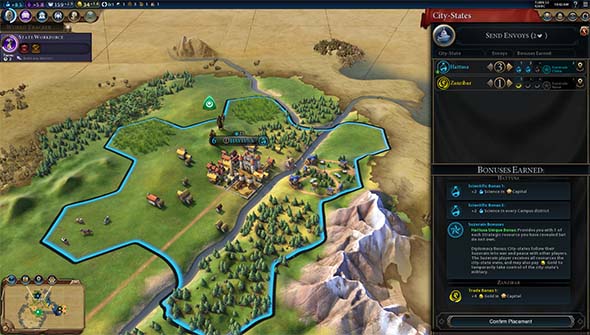
City State "diplomacy" is now handled by sending envoys rather than by buying their alliances with gold.
The new city state system relies on sending diplomatic envoys to a city state. Once certain thresholds of envoys have been reached, the city state grants certain bonuses based on its type. The civ with the most envoys gets the privilege of being the suzerain of the city state (seems to be just a renaming of "ally" or "master"), which confers a unique bonus to the civ from that city state. Having unique bonuses from city states is a cool new feature that adds more variety and personality, and helps inform the player of the history of that city states in the same way that the civilizations' national powers were informed by some aspect of the respective civ's culture and history. Very nice addition.
The envoy system seems to be an attempt to make city states feel more diplomatic and less like bribery subjects. It sounds like it should work towards that goal, and city states alliances will require more long-term commitment and hopefully won't be subject to the same kinds of mass-gold buying to suddenly swing their alliances from one civ to another. I just wonder if city states will still play a major part in the diplomatic victory?... [More]
de2d4ae3-198c-4487-af6e-079600f8db29|0|.0
Tags:Civilization, Sid Meier's Civilization, Civilization V, Civilization VI, PolyCast, Firaxis, podcast, DanQ, Makahlua, TheMeInTeam, MadDjinn, city state, envoy, civic, social policy, Ed Beach, E3
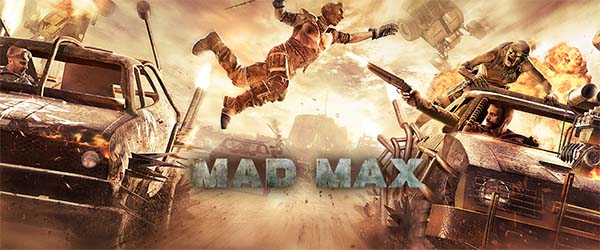
Normally, I try not to get excited about movie-tie in games. They have a very bad track record - with only a handful of exceptions. But this Mad Max game wasn't a direct movie adaptation, and it didn't release simultaneously with the movie, implying that it hopefully wasn't being rushed out the door to meet the movie's release. Warner Brothers Interactive had previously released Middle Earth: Shadow of Mordor, which was also sort of a tie-in to the Lord of the Rings and Hobbit movies, and that game was actually very exceptional! It had a novel and innovative concept around which the entire game revolved (making it very focused), and it was a very well-polished game that was immensely comfortable to control. So Warner Bros had earned some benefit of the doubt for its next game. I wasn't expecting Mad Max to match (let alone exceed) Shadow of Mordor, but I still had hopes that this one would turn out to be a well-realized game that could stand tall and proud as one of those rare, good movie tie-in games. After all, the concept of an open-world, post-apocalyptic action game about smashing spiky, nitrous-fueled cars into each certainly sounds like a solid premise for a game!
Well, not quite...
Wasteland chaos
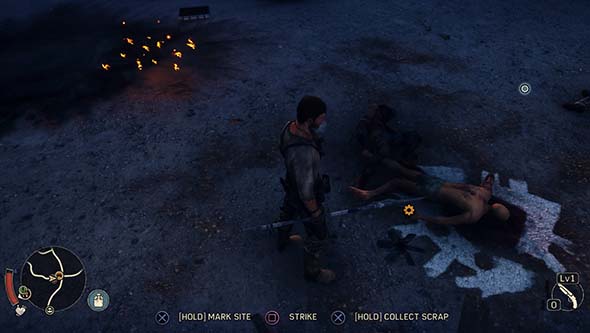
Many actions are overloaded to the X button - the game even displays conflicting prompts at times!
Virtually every interaction that I had with the game was either naggingly uncomfortable in some way or was prone to glitches. Even the basics of moving around and interacting with objects in the game world was a constant chore. When one button does everything; it does nothing (see my Assassin's Creed III review). Fortunately, a couple really important functions (like getting in and out of cars) were mapped to different buttons, but virtually everything else uses the X button. So if you're standing in front of a ladder and holding a weapon, it's a crapshoot whether the game will decide to let you climb the ladder or make you drop the weapon, and then it'll be a crap shoot whether the game lets you pick up the weapon again. Oh there's button-prompts to tell you what you can and can't do, but sometimes they outright conflict with one another. Besides, when you're running or fighting, then you're reacting on impulse and muscle memory rather than reading screen prompts. It doesn't help that the character's movement is very fidgety, so it's hard to position yourself properly when trying to interact with objects. I think the developers recognized this, which is probably why they make you have to hold the button for a second in order to perform most actions - to give you time to ask yourself "are you sure this is the action you want to do?".
Not enough space for vehicular combat
Clunky movement isn't limited to walking on foot. Steering vehicles is also very fidgety and floaty, and I found it very difficult to perform any precision maneuvering in the cars. The cars all tend to understeer at high speeds, but then strangely oversteer or fish-tail whenever you let off the gas. Trying to hit a ramp or knock down an enemy scarecrow or ram a sniper tower would often require multiple passes in order to succeed, and doing slaloms through the canyons resulted in a lot of cheap impacts. The rough terrain also leads to a lot of spin-outs. The vehicles feel so weightless and floaty that they can park on nearly vertical slopes, and running over a pebble can send the car hurtling and flipping 20 feet in the air. On a more personal note, I prefer my driving games to have cameras very close to the action, and so Mad Max's driving camera feels like it's a mile away from the action, which makes it harder for me to get a feel for precisely where the car is in relation to the environment. Virtually none of the game's vehicular set pieces really worked all that well for me due to these nagging control and scaling issues. If the map were bigger to accommodate multiple vehicles running side-by-side on a road, then dealing with the low-traction sand or the unlevel rocks wouldn't be so much of a consistent problem. Even having the option to zoom in the camera (an option that I couldn't find) would go along way towards helping me make more precise maneuvers.
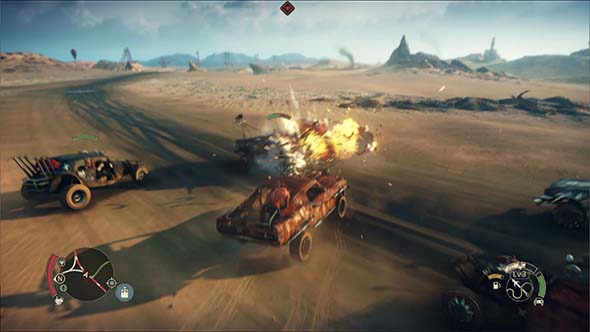
The primary gimmick of vehicular combat works fairly well in spite of the map not feeling big enough to support it.
This game really lives or dies based on how well the cars perform. The bulk of the game is played from within your car. You use the car to travel the world, and it's actually your primary weapon thanks to the game's novel vehicular combat. This vehicular combat would actually be really fun if the cars handled a bit better and were durable enough to actually take the beating that the combat entails... [More]
0acf283b-cb76-4ee2-80ba-14aaf6805d1e|0|.0
Tags:Mad Max, Max, Warner Brothers Interactive Entertainment, Avalanche Studios, vehicle, car, driving, combat, gasoline, water, wasteland, open world, sandbox, action, survival, fuel, food, post-apocalypse, nuclear war, Australia, Max Rockatansky, Chumbucket, Mad Max: Fury Road, movie tie-in, Achievement unlocked
|

| 12 | | | | | | | 60 | | 11 | | | | | | | 55 | | 10 | | | | | | | 50 | | 09 | | | | | | | 45 | | 08 | | | | | | | 40 | | 07 | | | | | | | 35 | | 06 | | | | | | | 30 | | 05 | | | | | | | 25 | | 04 | | | | | | | 20 | | 03 | | | | | | | 15 | | 02 | | | | | | | 10 | | 01 | | | | | | | 05 |
|